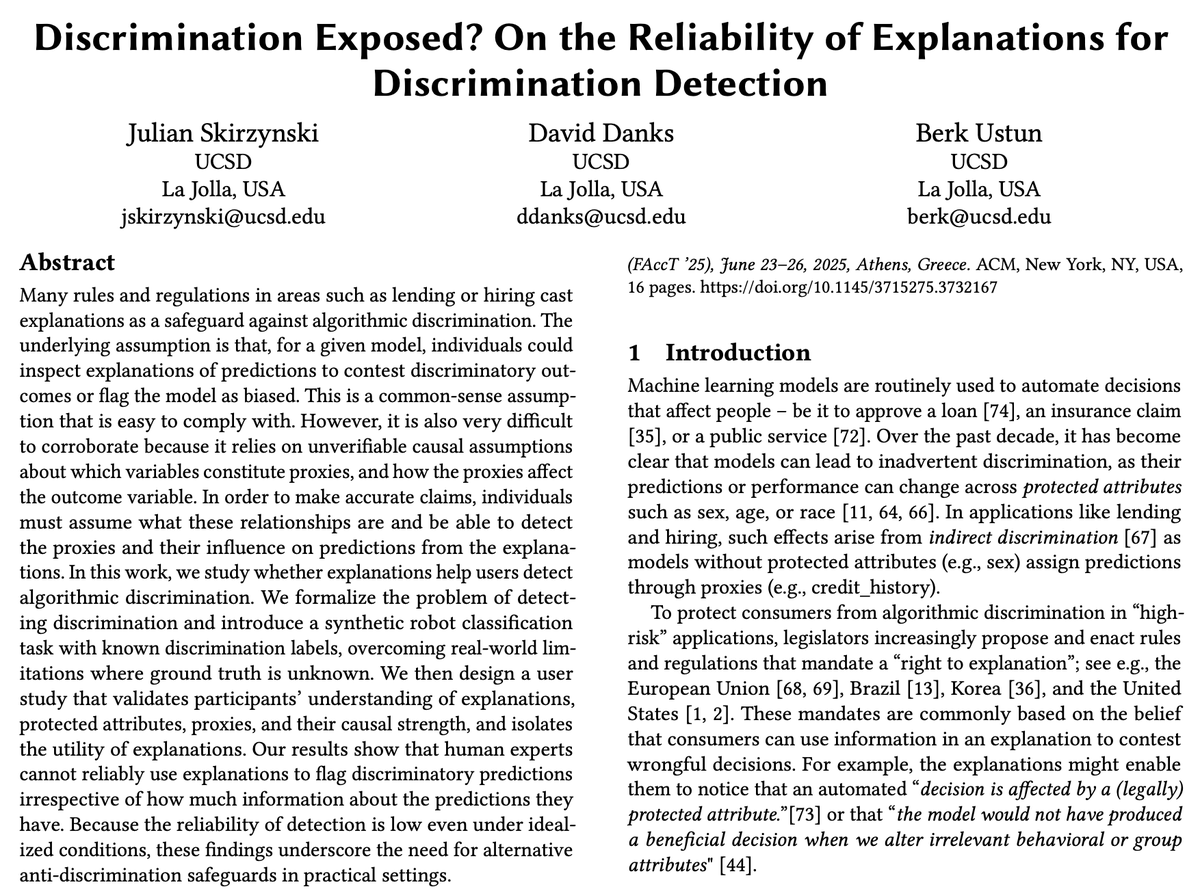
Julian Skirzynski
@JSkirzynski
Followers
150
Following
59
Media
16
Statuses
56
PhD student in Computer Science @UCSD and researcher @MPI_IS. Studying interpretable AI and RL to improve people's decision making.
San Diego, CA
Joined March 2022
Do we really need to learn from our mistakes? Couldn’t we just… make optimal decisions like computers 🤖 and not make mistakes?. Well, our new work accepted in Computational Brain & Behavior journal indicates that it might be possible!. 🧵👇1/9
2
9
24
We’ll be presenting @FAccTConference on 06.24 at 10:45 AM during the Evaluating Explainable AI session!. Come chat with us. We would love to discuss implications for AI policy, better auditing methods, and next steps for algorithmic fairness research. #AIFairness #xAI.
0
1
2
Right to explanation laws assume explanations help people detect algorithmic discrimination. But is there any evidence for that?. In our latest work w/ David Danks @berkustun, we show explanations fail to help people, even under optimal conditions. PDF
1
2
7
RT @GoogleAI: Today we introduce an AI co-scientist system, designed to go beyond deep research tools to aid scientists in generating novel….
0
1K
0
RT @KexinHuang5: 🧪 Introducing POPPER: an AI agent that automates hypothesis validation by sequentially designing and executing falsificati….
0
228
0
RT @HaileyJoren: ✅Easy: train a model to automate a routine task.❌Hard: ensure the model is accurate with minimal human oversight. In our l….
0
4
0
RT @berkustun: 📢 Please RT 📢. I am recruiting PhD students to join my group at UCSD!. We develop methods for responsible machine learning….
0
124
0
RT @RtnlAltruismLab: @FalkLieder gave a talk on Improving #Decision_making @PennMindCORE. Here’s the recording:
0
1
0
RT @cogconfluence: 🚨 NEW PAPER 🚨. Understanding increasingly large and complex neural networks will almost certainly require other AI model….
0
26
0
RT @FalkLieder: I'm thrilled to announce the launch of the Rational Altruism Lab at UCLA. We strengthen the scientific foundations for moti….
0
15
0
RT @berkustun: Machine learning models often use group attributes like sex, age, and race for personalization. In our latest work, we show….
0
9
0







